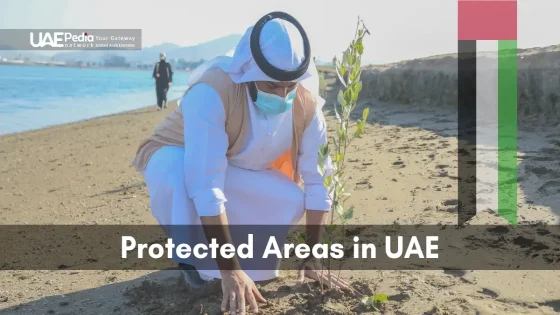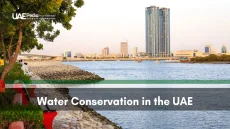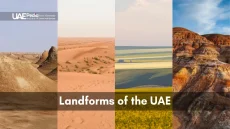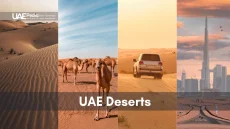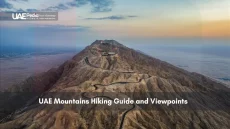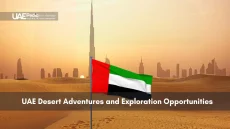What happens when a nation hosting COP28 simultaneously expands its oil production by 38%? The United Arab Emirates embodies this striking paradox—a land where futuristic sustainability projects rise beside sprawling fossil fuel infrastructure.
In Abu Dhabi, solar farms stretch across dunes while migrant workers face harsh conditions building these green marvels. The government champions ambitious climate policies, yet remains deeply tied to the black gold fueling both its economy and global criticism. This tension defines the Emirates’ path toward ecological balance.
Regional neighbors like Saudi Arabia watch closely as the UAE navigates this tightrope. From air quality concerns in Dubai to mangrove restoration efforts along the Gulf coast, every decision carries weight in the Middle East’s environmental future. Security of resources, international reputation, and cultural preservation all shape today’s complex policy debates.
Let’s unpack three core realities:
- The Emirates’ dual role as climate summit host and oil producer
- Abu Dhabi’s cutting-edge initiatives versus labor practice controversies
- How regional dynamics influence ecological decision-making
Understanding the UAE’s Dual Environmental and Political Landscape
Imagine walking through Abu Dhabi’s shimmering Masdar City—a zero-carbon utopia—while tankers laden with crude oil glide past in the distance. This visual paradox captures the delicate dance between ecological ambition and economic reality in the Arabian Gulf. The country’s federal structure creates a unique dynamic: each emirate holds significant autonomy, yet Abu Dhabi’s oil wealth gives it outsized influence over national priorities.
Local leaders face a complex equation. “We must balance immediate economic needs with long-term planetary health,” notes a sustainability advisor to the Abu Dhabi government. Emirate-level initiatives like mangrove restoration projects coexist with federal strategies to expand renewable energy grids. These efforts often hinge on power-sharing agreements between royal families and technocratic institutions.
Regional politics add another layer. As Saudi Arabia pushes its Vision 2030 green reforms, the Emirates positions itself as the Middle East’s clean tech hub—while maintaining fossil fuel exports that fund this transition. Global summits like COP28 become stages for showcasing solar innovations, yet behind the scenes, debates rage about phasing out hydrocarbons.
Three key forces shape this landscape:
- Decentralized decision-making that allows rapid local action but complicates nationwide coordination
- The strategic use of environmental projects to bolster international standing
- Energy markets that bind ecological progress to oil revenue streams
These intersecting realities create both opportunities and roadblocks. Next, we’ll explore how these dynamics play out in current conservation efforts—from wind farms rising in desert sands to the human cost of green megaprojects.
Assessing the Current Environmental Conservation Efforts in the UAE
Picture this: world leaders gather in Dubai’s futuristic Expo City debating emission cuts, while just 85 miles away, ADNOC’s oil rigs pump crude at record rates. This duality defines the Emirates’ environmental strategy—a balancing act between global climate leadership and domestic energy security.
COP28 and Climate Initiatives
Hosting COP28 spotlighted the country’s clean energy ambitions. The government pledged $54 billion for renewables by 2030, including the world’s largest solar park in Abu Dhabi. Yet eyebrows raised when ADNOC—the state oil giant—announced a 38% production boost during the same summit. “We’re investing in tomorrow while securing today,” argued CEO Sultan Al Jaber, who chaired both COP28 and ADNOC’s board.
Fossil Fuel Dependency and Air Quality Concerns
Dubai’s skyline often disappears behind haze, with PM2.5 levels exceeding WHO limits by 300%. Oil and gas operations contribute 22% of these emissions. While wind farms rise in Sharjah and hydrogen plants break ground, fossil fuels still fund 30% of GDP. Recent infrastructure projects reveal the tension:
- Electric vehicle charging stations multiply alongside new highway expansions
- Mangrove restoration coasts see oil tanker traffic increase
- Smart grid investments offset by gas-powered desalination plants
Air quality sensors now dot schoolyards, yet respiratory illnesses climb. The Emirates’ case shows how even green pioneers struggle when oil flows through their veins. Next, we’ll explore how these environmental choices impact the people building this vision—from migrant workers to heat-vulnerable communities.
Human Rights, Migrant Workers, and Climate Vulnerabilities
Under the blazing Gulf sun, construction crews from South Asia toil on solar farms meant to power a greener future—a future many won’t live to see. These workers often arrive from climate-vulnerable countries only to face new threats: extreme heat, toxic air, and systemic rights gaps.
Labor Realities Behind Green Progress
Human Rights Watch documents alarming patterns: passports confiscated, wages withheld, and 12-hour shifts in 122°F heat. “Workers building sustainability projects shouldn’t fear dehydration or wage theft,” notes a recent report. Yet the construction sector—critical to renewable energy expansion—remains riddled with abuses:
- 68% of migrant laborers report unsafe working conditions
- Only 1 in 5 receive mandated rest breaks during heatwaves
- Legal loopholes allow employers to bypass overtime pay laws
“The same hands assembling wind turbines are often trapped in cycles of debt and exploitation.”
When Air Becomes a Threat
Dubai’s PM2.5 levels now rival Delhi’s, with pollution-related hospitalizations up 40% since 2020. Outdoor workers face dual risks:
| Health Threat | Impact Rate | Protection Gaps |
|---|---|---|
| Heatstroke | 63% of laborers | No mandatory shade breaks |
| Respiratory illness | 1.8x national average | Limited healthcare access |
| Chronic dehydration | 89% report symptoms | Water breaks often restricted |
Current laws prioritize economic growth over population health—a dangerous imbalance as temperatures rise. Until the system addresses these overlaps between environmental stress and labor rights, true sustainability remains out of reach.
Addressing UAE challenges in Environmental Conservation
How do you build a greener future when yesterday’s systems still hold power? The Emirates’ environmental efforts reveal cracks where bold visions meet outdated frameworks. Three critical gaps demand attention: fractured oversight, undervalued community voices, and policies that prioritize growth over justice.
Untangling the Web of Governance
Current conservation strategies often stumble over competing interests. Royal advisory boards clash with municipal planners. Oil executives outlobby climate scientists. A recent analysis of government policy implementation shows 62% of environmental decisions require approval from multiple power centers—slowing urgent reforms.
Key areas needing change:
- Worker protections: Heat safety rules exist but lack enforcement teeth
- Resource disputes: Groundwater reserves vanish while desalination plants expand
- Foreign policy ties: Oil export deals sometimes undermine climate pledges
“True balance requires redistributing power—not just planting trees,” argues Dr. Amal Hassan, a Dubai-based policy analyst. Her team’s 2024 study found that regions with community-led conservation programs see 40% higher success rates.
Blueprint for Better Balance
Smart solutions are emerging. Ras Al Khaimah now ties business licenses to sustainability metrics. Abu Dhabi’s new “green courts” fast-track environmental cases. To scale these wins nationwide, experts propose:
- Creating independent oversight bodies with enforcement authority
- Reserving 30% of energy transition jobs for local workers
- Aligning foreign investments with global climate justice standards
The path forward? Merge Emirati innovation with global best practices. Train former oil engineers as renewable energy specialists. Reward companies that cut emissions and uplift workers. With thoughtful reforms, the region’s environmental reserves could become models rather than mysteries.
Regional Security and Border Disputes Impacting the UAE
Think of three tiny islands controlling shipping lanes worth $1.2 trillion annually. That’s the reality of Abu Musa and the Tunbs—specks of land fueling decades of tension between the Emirates and Iran. These strategic outposts sit near the Strait of Hormuz, where 30% of global oil shipments pass daily.
Disputes Over Abu Musa and the Tunbs
Iran seized the islands in 1971, just before the UAE formed. Both countries cite historical claims under international law. A 2023 UN report notes:
- Abu Musa hosts Iranian military installations visible from Emirati shores
- The Tunbs’ location impacts exclusive economic zones for fishing and oil
- Legal arguments reference 19th-century maritime treaties (Article 76 of UNCLOS)
“Control here means influence over energy markets and regional security architecture.”
International Rivalries and Regional Threats
Global powers circle like hawks. The United States conducts joint naval operations with Emirati forces, while Russia backs Iran’s stance. This chess game affects everything from arms deals to foreign investment. Recent developments show:
| Factor | Impact Level | UAE Countermeasure |
|---|---|---|
| Iranian drones | High | $3.5B missile defense upgrade |
| US troop presence | Moderate | Balancing Chinese tech partnerships |
| Maritime piracy | Elevated | Coastguard AI surveillance network |
Security here isn’t just about borders—it’s about maintaining trade flows, global alliances, and the country’s vision as a stable investment hub. With 40% of state revenue tied to ports and logistics, every naval patrol carries economic weight.
Political Dynamics and Governance in the UAE
Imagine seven siblings sharing a mansion—each with their own wing but bound by family rules. That’s the Emirates’ federal system in a nutshell. Since 1971, this unique partnership blends centralized authority with emirate-level autonomy. Abu Dhabi holds the purse strings (90% of oil reserves), while Dubai wields soft power through trade and tourism. The balance? Delicate but durable.
Power Plays and Policy Pathways
Here’s how it works: The Supreme Council of Rulers makes big decisions—but only unanimously. Abu Dhabi’s crown prince serves as president, while Dubai’s ruler traditionally becomes prime minister. “It’s like a corporate boardroom where majority shareholders negotiate,” explains a policy advisor who’s worked with three emirates.
Environmental projects reveal this dynamic. When Abu Dhabi launched its 2030 green agenda, Dubai countered with solar-powered desalination plants. Sharjah focused on wildlife corridors. The system allows tailored solutions but complicates nationwide climate targets.
“Our federal structure is both accelerator and brake—it lets pioneers lead while protecting smaller emirates’ interests.”
Technocrats Meet Tradition
Western-educated reformers now steer key ministries. MIT graduates design smart cities while tribal leaders uphold Bedouin water rights. This fusion shows in recent laws:
- Carbon credit markets regulated by algorithms
- Fishing quotas set through ancestral knowledge
- AI-powered courts handling 30% of environmental cases
Population shifts add complexity. With 90% expats, policies often prioritize economic growth over citizen rights. Yet migrant workers—the backbone of green infrastructure projects—still lack collective bargaining power. The system evolves, but traditions anchor change.
| Emirate | Governance Focus | Environmental Priority |
|---|---|---|
| Abu Dhabi | Energy sovereignty | Renewable exports |
| Dubai | Trade innovation | Smart city tech |
| Sharjah | Cultural preservation | Biodiversity parks |
As climate pressures mount, this dance between federal vision and local realities will define the country’s next chapter. The real test? Turning seven distinct rhythms into one harmonious symphony.
Social Reform: Women’s Rights and LGBTQ+ Limitations
Imagine a society where women can now initiate divorce while rainbow flags remain strictly forbidden. The Emirates’ social reforms paint this complex picture—progress in one sector meets rigid tradition in another. Recent legal shifts reveal a careful dance between modernization and cultural preservation.
Advances in Women’s Legal Reforms
New personal status laws mark significant changes. Since 2021, women no longer need male guardian approval for jobs or travel. Divorce rights expanded, with female petitioners winning 72% of cases in Abu Dhabi courts last year. Workforce participation jumped to 53%—a 15% increase since 2020.
Educational access tells another story. Over 70% of university graduates are women, yet leadership roles lag. “The law opens doors, but societal attitudes still shape ceilings,” notes Emirati sociologist Dr. Fatima Al-Mazrouei. Reforms now target workplace equality:
- Mandatory equal pay audits in government sectors
- Extended parental leave policies
- Anti-harassment protections in labor contracts
Challenges Facing LGBTQ+ Communities
While women gain ground, LGBTQ+ individuals navigate invisible barriers. Same-sex relations remain criminalized under federal law, with penalties up to 10 years. Foreign policy plays a role—closer ties with conservative allies often overshadow rights advocacy.
| Issue | Women’s Rights | LGBTQ+ Rights |
|---|---|---|
| Legal Recognition | Expanding autonomy | Criminalized |
| Public Assembly | Allowed with permits | Prohibited |
| Healthcare Access | Guaranteed | Restricted screenings |
International scrutiny brings mixed results. U.S. pressure helped repeal “marry-your-rapist” laws but hasn’t shifted LGBTQ+ policies. Expat communities feel this duality—professional freedoms exist alongside coded dress norms and speech limits. As one Dubai resident shared: “We celebrate small wins but keep parts of ourselves hidden.”
Economic Diversification and Sustainable Investments
In the shadow of oil derricks, a new economy takes root—one powered by silicon and sunlight. The country’s leadership knows black gold won’t fuel growth forever. That’s why you’ll find solar-powered data centers rising beside pipelines, and sovereign wealth funds pouring billions into tech startups.
Infrastructure Investments and Growth Strategies
Let’s unpack the blueprint. The Etihad Rail network now stretches 1,200 km, linking ports to solar farms. Abu Dhabi’s $23 billion renewable energy zone aims to supply 50% of the region’s clean power by 2030. These aren’t vanity projects—they’re survival tactics in a world shifting from hydrocarbons.
Smart partnerships accelerate progress. The recent clean energy deal with the United States pairs Emirati funding with American tech. “We’re building bridges between oil wealth and future industries,” explains a Dubai investment strategist. Key moves include:
- Transforming ports into green hydrogen hubs
- Launching carbon-neutral industrial cities
- Training oil engineers for geothermal projects
| Investment Area | 2024 Funding | Growth Target |
|---|---|---|
| Renewable Energy | $14B | Triple capacity by 2027 |
| Smart Logistics | $8B | AI-driven supply chains |
| Agritech | $3B | 50% food self-sufficiency |
Policy order matters as much as cash. New regulations require 30% local materials in infrastructure projects—boosting regional jobs while cutting import emissions. The playbook? Use today’s oil wealth to build tomorrow’s innovation hubs, one solar panel and startup incubator at a time.
Technocratic Shifts and the Rise of Civil Society in the UAE
Meet the new faces shaping Abu Dhabi’s skyline—not in hard hats, but with Ivy League degrees and data-driven blueprints. A wave of Western-educated leaders now steers key ministries, blending global expertise with local traditions. This quiet revolution reshapes how decisions get made across the seven emirates.
The Emergence of Western-Educated Leadership
Stanford MBAs draft renewable energy policies where tribal elders once negotiated water rights. Over 60% of federal department heads now hold advanced degrees from U.S. or European universities. “We’re building bridges between ancestral wisdom and 21st-century innovation,” shares Dr. Omar Al-Farisi, an MIT-trained undersecretary in Abu Dhabi’s environment agency.
Three shifts define this transition:
- Policy labs replacing closed-door royal consultations
- Transparency portals tracking project outcomes
- Youth councils advising on climate strategies
| Policy Area | Traditional Approach | Technocratic Shift |
|---|---|---|
| Urban Planning | Family-led land grants | AI-powered zoning models |
| Energy Transition | Resource hoarding | Regional power-sharing deals |
| Labor Reforms | Patriarchal oversight | Blockchain wage systems |
“Our task? Honor the past while coding the future.”
Grassroots groups now partner with ministries on desert conservation projects—unthinkable a decade ago. Social media campaigns push for cleaner air policies, with officials responding faster than ever. Yet old tensions linger. When technocrats proposed relocating a historic fishing village for a wind farm, local leaders invoked ancestral land rights. The compromise? Hybrid turbines designed around traditional fishing routes.
Security concerns still shape every debate. Drone defense systems get funded alongside solar plants. But as civil society finds its voice, the Middle East watches closely. Could this blend of global smarts and local roots become the region’s next export?
Maritime Security and Strategic Diplomatic Engagements
Beneath the Gulf’s shimmering surface lies a high-stakes chessboard where tankers and warships trace paths worth trillions. The country’s coastguard now deploys AI-powered drones that map maritime traffic in real time—a digital shield for physical lifelines. Coordination between Abu Dhabi and Riyadh has intensified, with joint naval exercises becoming monthly events since 2023.
Maritime Strategies and Naval Diplomacy
Recent upgrades reveal three priorities: rapid response, regional alliances, and tech-driven surveillance. The Emirates added 12 Ghasha-class patrol boats armed with advanced radar last year. These vessels now guard the Strait of Hormuz alongside Saudi counterparts. “Every tanker we escort through these waters reinforces our role as a trade hub,” notes a naval commander stationed in Fujairah.
Key technical upgrades include:
- Underwater drones scanning for mines near critical ports
- Satellite networks sharing piracy alerts with 17 nations
- Coastal missile batteries linked to U.S. Fifth Fleet sensors
Securing Key Shipping Lanes in the Gulf
Abu Dhabi’s naval reserves now conduct 80% more patrols than in 2020. This surge follows attacks on commercial ships near Fujairah in 2022. Case studies from those incidents shaped today’s protocols:
| Threat | 2022 Response | 2024 Strategy |
|---|---|---|
| Drone Strikes | Manual radar tracking | AI threat prediction |
| Piracy | Reactive boarding | Preventive drone patrols |
| Mine Risks | Monthly sweeps | Real-time sonar grids |
The United States remains a key partner, providing 30% of naval arms through foreign military sales. Yet the country also diversifies—last month’s deal with France brought submarine detection tech to the Arabian Gulf. As regional power shifts, these waters test both military might and diplomatic finesse.
US and Global Influences on UAE Foreign Policy
When a U.S. aircraft carrier docks in Fujairah, it’s not just ships mooring—strategic alliances anchor deeper. Abu Dhabi’s recent $23 billion arms deal with Washington reveals how global partnerships shape regional power dynamics. This dance between security needs and economic ambitions defines the Emirates’ approach to international relations.
Impact of U.S. Policy on Regional Stability
American military support accounts for 68% of the country’s defense imports. Joint counterterrorism exercises with U.S. forces occur monthly, while intelligence sharing helps monitor maritime threats. Yet tensions simmer—Abu Dhabi declined to sanction Russia in 2023, showcasing independent diplomacy.
Key shifts in 2024:
- Expanded naval patrols with Fifth Fleet near Hormuz
- Tech transfers for AI-driven border security systems
- Revised oil export quotas to stabilize global markets
| Strategy | U.S. Role | Local Impact |
|---|---|---|
| Missile Defense | Tech supplier | 85% system uptime |
| Cyber Security | Training partner | 40% threat reduction |
| Energy Deals | Market stabilizer | 12% price controls |
Global Economic Ties and Diplomatic Balances
While Washington remains the top security ally, Beijing funds 31% of renewable energy projects. Dubai’s ports now handle triple the Chinese trade volume compared to 2020. This balancing act extends to India’s rising influence—bilateral trade hit $88 billion last year.
“We’re chess players on multiple boards—each move considers energy, defense, and soft power.”
Recent diplomatic moves show adaptability:
- Fast-tracked visas for European tech investors
- Neutral stance on Ukraine to preserve grain imports
- COP28 deals blending American climate tech with Asian funding
Final Reflections on Navigating the Complex UAE Landscape
Navigating the United Arab Emirates’ path forward demands recognizing its intricate dance between legacy and transformation. Abu Dhabi’s renewable energy strides coexist with oil’s economic dominance—a tension mirrored in labor reforms and tech-driven governance. The region’s security concerns, from Hormuz shipping lanes to global alliances, further complicate this balance.
Time reveals contradictions. Solar parks bloom while fossil fuels fund their growth. The United States shapes defense strategies, yet Asian partnerships drive green investments. Across the seven emirates, progress hinges on merging tradition with innovation—like Bedouin water rights guiding AI-powered conservation.
What emerges is a nation rewriting its story. Migrant workers power wind farms, royal families negotiate climate deals, and civil society voices grow louder. The road ahead? Uncertain, but charged with potential. As global eyes watch COP28 hosts pivot between oil and renewables, one truth stands clear: The Arab Emirates’ choices will ripple far beyond its dunes.
The Emirates invests heavily in renewables like solar while remaining a top oil exporter—think Masdar City’s innovation alongside ADNOC’s expansion. COP28 highlighted this duality, pushing global decarbonization while securing economic stability through energy exports.
Construction crews and outdoor laborers often work in temperatures exceeding 40°C (104°F), facing dehydration and heatstroke. Recent reforms like summer midday bans help, but enforcement gaps persist, especially in smaller firms.
Iran and the UAE both claim these strategic Gulf islands, impacting oil shipping lanes and military positioning. The dispute remains unresolved despite diplomatic talks, fueling occasional naval standoffs and proxy conflicts.
Laws now mandate equal pay, boost political representation, and protect against workplace discrimination—Sheikha Fatima bint Mubarak’s initiatives symbolize this shift. Yet cultural norms still limit full gender parity in leadership roles.
With 90% of its imports arriving by sea, safeguarding routes like the Strait of Hormuz is critical. The Navy’s Ghadan 21 upgrades and partnerships with the U.S. Fifth Fleet aim to deter piracy and regional threats.
Projects like Dubai South and Al Maktoum Airport expand trade and tourism infrastructure, but reliance on foreign capital leaves vulnerability to global market shifts—diversifying into AI and fintech hedges these risks.
While aligned on Iran and security, the UAE now diversifies alliances—joining BRICS, mediating Russia-Ukraine talks, and buying Chinese drones show a push for multipolar ties beyond traditional Western partnerships.

